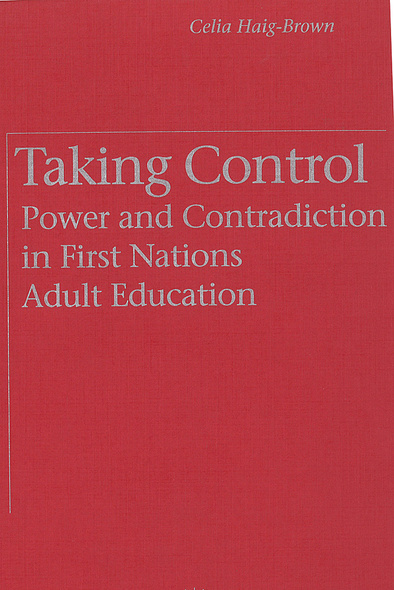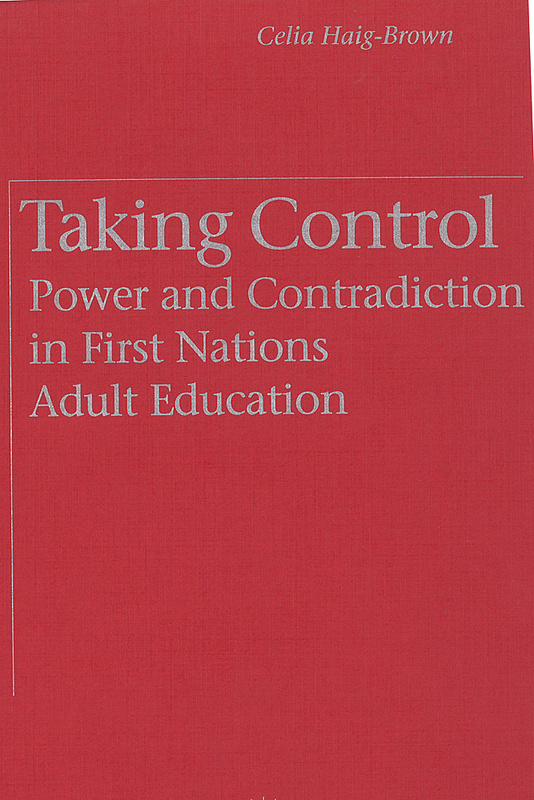
Taking Control
Power and Contradiction in First Nations Adult Education
Taking Control is a critical ethnography of the Native Education Centre in Vancouver, British Columbia. It presents an intimate view of the centre, focusing on the ways that people who work there – First Nations students, board members, teachers, and non-Native teachers – talk about and put into practice their beliefs about First Nations control. As Michael Apple comments in the preface, their stories “provide concrete evidence of what can be accomplished when the complicated politics of education is taken seriously.”
The study is based primarily on fieldwork conducted in the centre during the 1988-9 school year. At that time, over 400 adult students were enrolled in eleven programs ranging from basic literacy and upgrading to “skills training” including Native Public Administration, Family Violence Counselling, and Criminal Justice Studies. Selected words of the people interviewed figure prominently in the descriptions of everyday life in the centre. The author contextualizes people’s notions of taking control, first within the space where they work, a building specially created using cedar planks, glass, and hand-carved poles, and second in relation to the efforts by aboriginal people to control their formal education in British Columbia. The book also contains a brief history of the centre itself.
The work engages theoretically with Foucault’s notion of power as a relation, juxtaposing it with the National Indian Brotherhood document Indian Control of Indian Education (1972). Views of the programs of study are a central focus of Taking Control, which also includes a self-reflexive analysis of the non-Native researcher’s position in a study of First Nations control.
Haig-Brown presents her research in a manner that demonstrates honour and commitment to those efforts.
This book provides a comprehensive picture of an institution devoted to community-based adult education that will add depth to the shorter accounts. Such interdisciplinary work, combining history, ethnography, and education, is sorely needed in rethinking those institutions.
An ethnography about hope, promise, hard work and community.
Foreword
Preface
Acknowledgments
Introduction
Part 1: Approaching the Native Education Centre
1 The Place
2 Power, Culture, and Control
3 Doing Ethnography: Socially Constructing Reality
4 Historical Fragments: First Nations Control in British Columbia
5 Becoming: A History of the Native Education Centre
Part 2: the Everyday World of Taking Control
6 The People and the Place
7 The People and the Programs
8 Taking Control: What They Said
Part 3: Forming Knowledge, Creating Discourse
9 Contradiction, Power, and Control
Appendixes
Notes
References
Index





